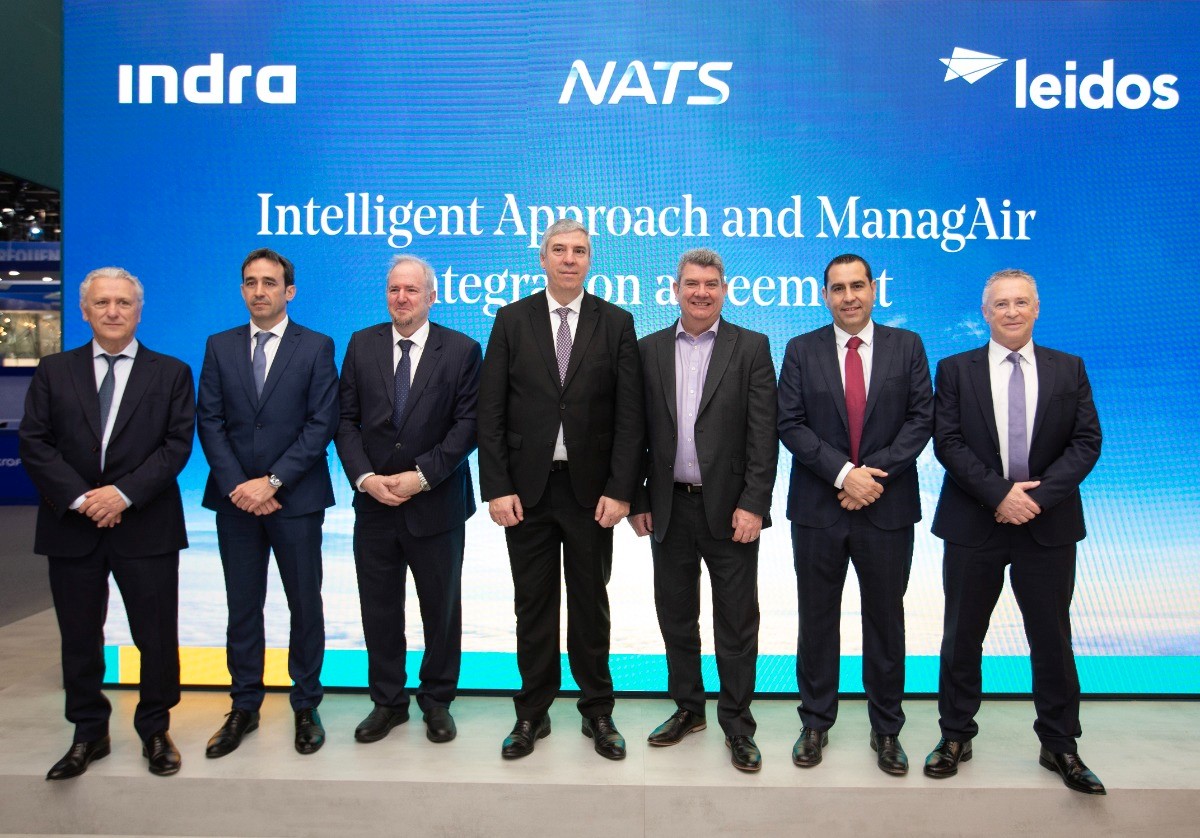MIDCAS program results brings closer integration of RPAS in European Civil Airspace.

The European Program MIDCAS (Mid-Air Collision Avoidance System)in which Indra has participated as a partner of the consortium coordinated by Saab within the framework of the European Defence Agency (EDA) has successfully presented its final results that brings integration of RPAs in civil airspace closer.
The project focused on laying the groundwork for future developments in the field of RPAS air traffic integration, for which a generic Sense and Avoid system and a Demonstrator were developed, equipping an Unmanned Aerial Vehicle (UAV) with the capacity for detecting other aircrafts and for performing avoidance maneuvers autonomously, without intervention of a pilot, when faced with the risk of collision.
This R&D project was launched in 2009 with a budget of €50 million and the support of five countries: Sweden, Germany, France, Italy and Spain. It was completed last September after successfully passing several simulation campaigns and performing real flight tests. These tests were carried out between March and April in Grazzanise (Italy), using the UAV Sky-Y as the test platform.
Within the project, Indra lead the team that defined the generic detection system. This is the part that allows detecting other aircrafts, contributing to the situational awareness of the system. The company also participated in the development of the radar simulated model, the sensor that, together with the optical and infrared camera, provides the capacity for detecting non-cooperative aircraft that fails to actively identify itself, whether due to unavailability, deactivation or failure of the systems required for doing so.
The "sensor" part of the MIDCAS system is completed with the cooperative identification systems: the IFF interrogator and the ADS-B, elements that collect the signals emitted by other aircraft with data on positioning, height, speed, etc. All of this information is processed, in turn, by the part of MIDCAS that is responsible for "avoidance", estimating the paths followed by aircraft and deciding on whether the risk of collision exists and if an avoidance maneuver is required.
As a support for the pilot in the ground, Indra has developed the separation function (self-separation or Traffic Avoidance), which, after receiving data from the sensors, determines whether the risk of conflict with other aircraft exists and proposes in advance maneuvers to the RPAS pilot for avoidance. If the RPA pilot doesn’t take any decision the aircraft will execute it in the collision avoidance phase.
Safety testing
On another hand, Indra also developed the simulation environment used for testing the MIDCAS system. The simulator allowed for reproducing situations entailing the risk of collision with all types of aircraft (commercial aircraft, helicopters, gliders, other drones, etc.).
Thousands of tests were performed using this synthetic environment, some in real time and others in accelerated mode, known as Montecarlo simulations, analyzing hundreds of different scenarios to verify that the safety levels offered by the system are equivalent to those of manned, civil aircraft.
In a third type of analysis, the simulator was connected to an Air Traffic Control (ATC) simulator located in Sweden, to test the operability of the MIDCAS system in a real airspace, managed by air traffic controllers, without representing an excessive workload for civil control centers.
The MIDCAS program objectives were completed with good results after demonstrating its capacity for performing avoidance maneuvers under real flight conditions when faced with both cooperative and non-cooperative aircraft. The development of this latter capacity for detecting and avoiding non-cooperative aircraft represents an important advance and positions the European industry a step ahead in this technology's development.
During a workshop last September in Brussels and as part of the program, the MIDCAS consortium presented the advances achieved to the main players of the aeronautical sector and to the bodies responsible for its safety and management worldwide.
Equipping RPAS with autonomous detection and avoidance capacity is one of the key aspects for integrating these types of aircraft in non-segregated airspace, in reference to the space shared with conventional, civil aircraft. This goal would be a major boost for this industry, given the tremendous amount of potential civilian uses of UAV.
The MIDCAS consortium is comprised of the Swedish Saab (program leader), Sagem, Thales, Airbus D&S, Diehl BGT Defence, DLR, ESG, Alenia Aermacchi, Selex ES, CIRA and Indra. External bodies such as EASA, EUROCONTROL, EUROCAE or JARUS also participated over the course of the initiative.
Indra has participated in the leading European projects that work toward integrating UAVs in civil airspace. In this regard, the company led the DeSIRE (Demonstration of Satellites enabling the Insertion of RPAS in Europe) project, that in 2013 demonstrated the viability of using satellite communications for this purpose. As part of this initiative, financed by the European Space Agency (ESA) and the European Defence Agency (EDA), several flights took place between the base at San Javier (Murcia) during which an UAV flew while sharing airspace with civil aircraft, in coordination with the air traffic control center in Barcelona.





.jpg)

.png)

Comments
There are no comments yet for this item
Join the discussion